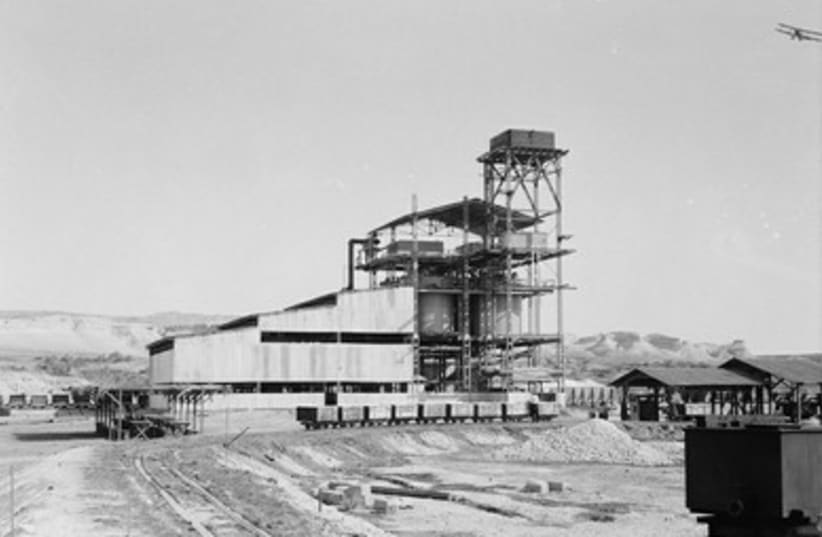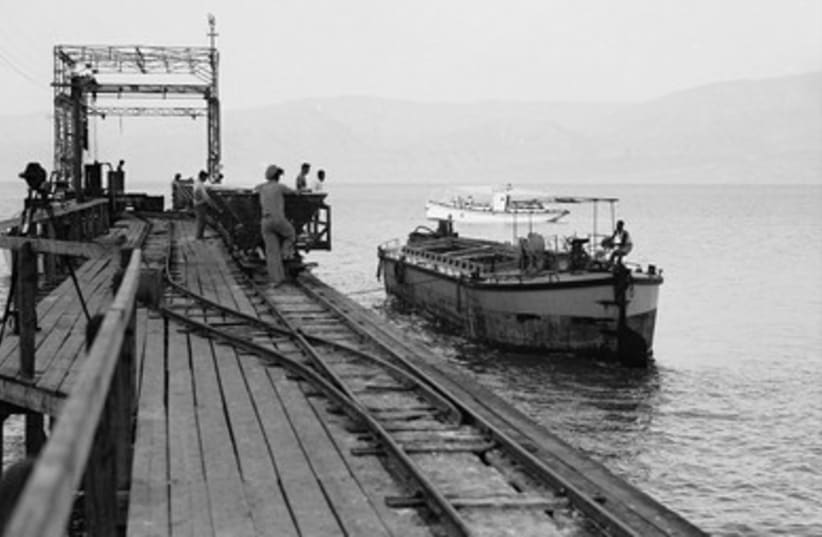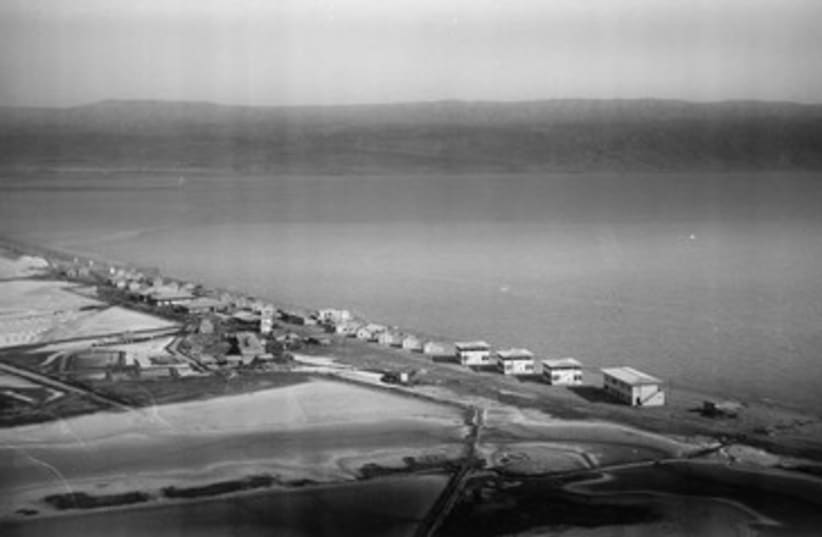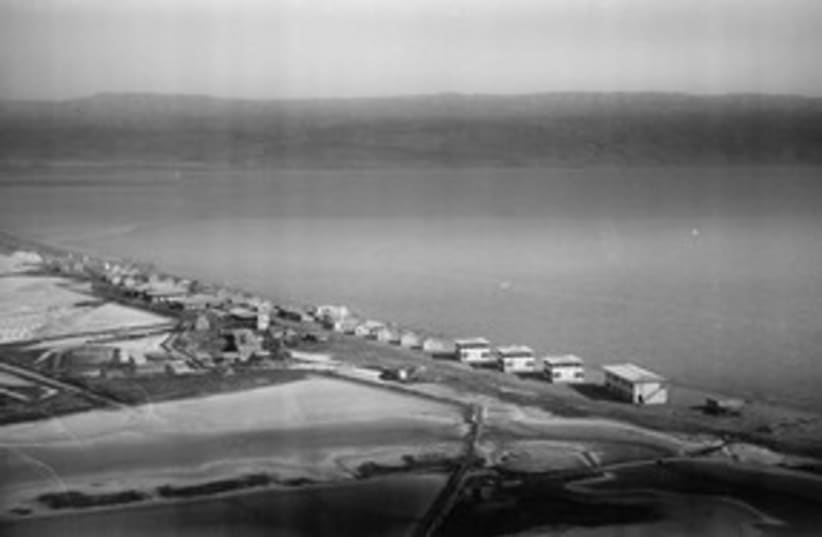



In the late 19th and early 20th centuries, the Jews of Palestine were employed in agriculture (oranges, wheat, dairy cows, etc) and small industries (textiles, edible oils, furniture, etc). Unlike other areas in the Middle East, large reserves of petroleum and natural gas were never found. While no "black gold" was pumped from beneath the ground, a "white gold" was mined from beneath the water. In 1930, a major industry was launched on the barren shores of the Dead Sea, the Palestine Potash Company. Established by Moshe Novomeysky, the company was responsible for approximately half the worth of all of the exports of the Jews of Palestine by 1940. During World War II, the company provided Britain with half of its potash. (Potash is not only used in fertilizer. In World War II, it was a vital component in the fuel used by combat aircraft.) At the time, the only route to the Dead Sea was overland via the Jerusalem-Jericho road or by boat to Trans-Jordan. Potash mined on the southern shore was loaded on barges and shipped to the northern facility where it was loaded on trucks. Until a workers' settlement was established in the north, workers traveled from Jerusalem. The potash company expanded to the southern half of the Dead Sea in 1934 where there was more area for evaporation pans. The area was known as Sodom. The violence of the Arab Revolt (1936-1939) also struck the Dead Sea enterprise. In September 1937 terrorists struck a truck convoy on the way toward Jerusalem. According to the British Mandate report for 1937: "On the 16th, five trucks belonging to the Palestine Potash convoy were ambushed and destroyed on the Jerusalem-Jericho road and two Arab employees of the company were murdered."the north were evacuated. The site was looted and destroyed by local Arab and the Jordanian Legion.Today, the Dead Sea Works is part of the Israel Chemical Group which reported $1.3 billion in revenue in 2010.The historic photographs presented here were part of an American Colony album produced for the Palestine Potash Company, and some 90 pictures can be viewed in the Library of Congress files.Michael Yaakovson visited the southern facility in 2009 and posted online an incredible collection of pictures of the abandoned camp. We thank him for permission to use some of his pictures.
More photos can be viewed at http://www.israeldailypicture.com.
